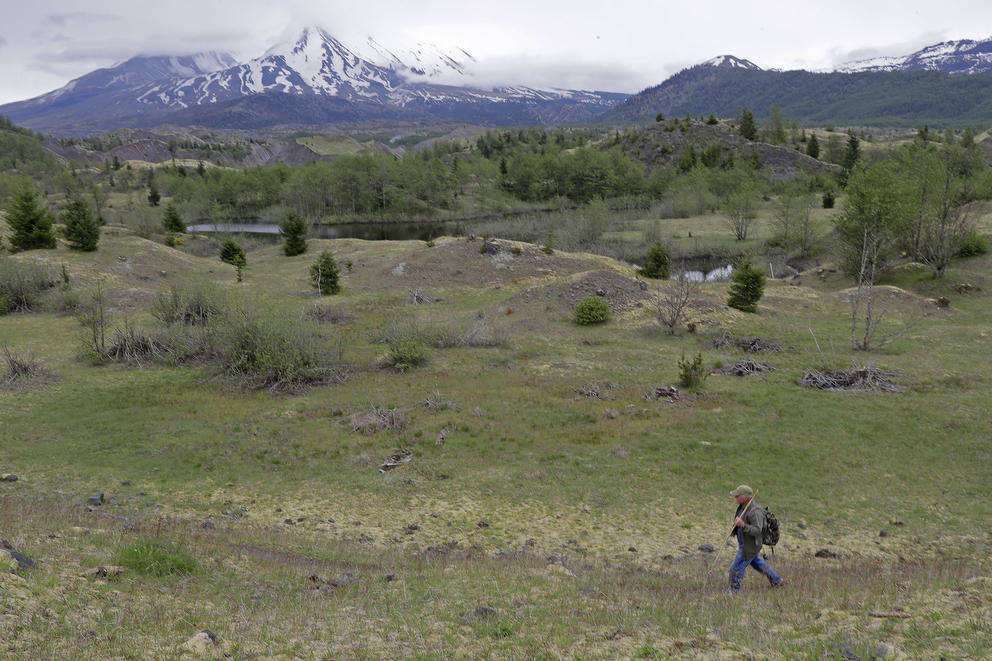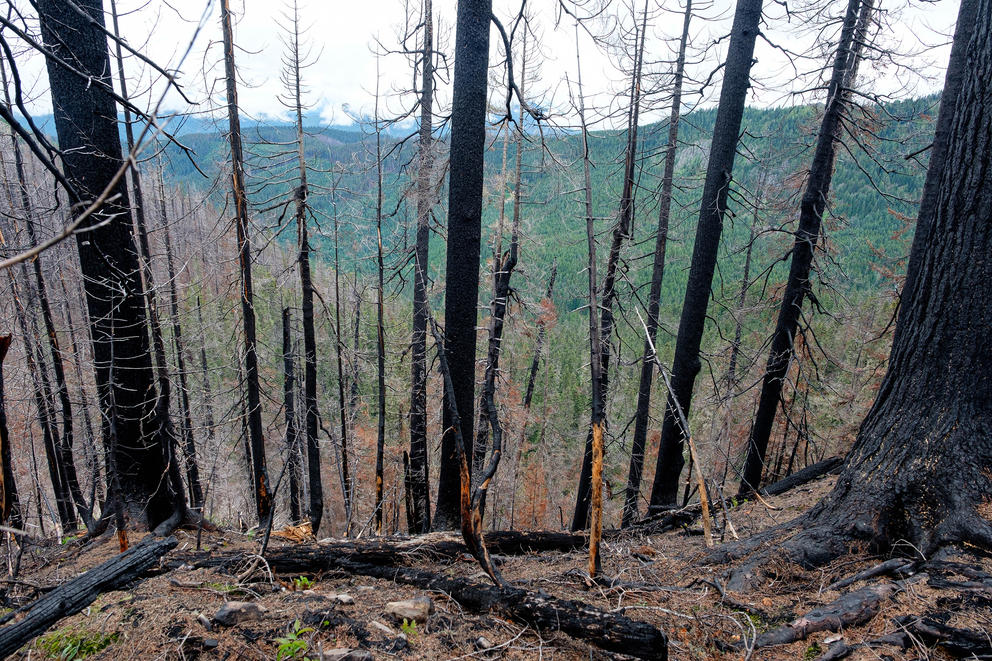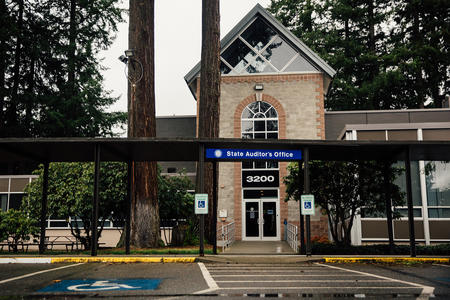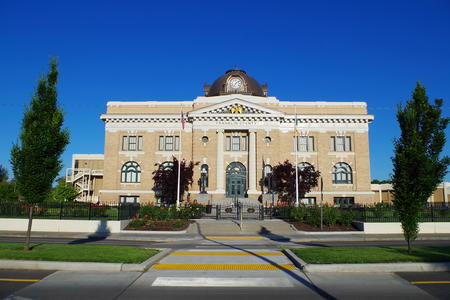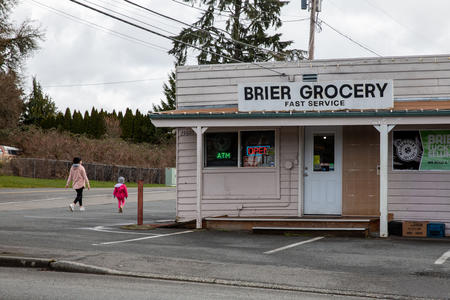“One of the comments that you often hear is – it’s a great place to live, it’s a hard place to make a living,” said Tom Lannen, who has served on the county commission for seven years.
Because of that land ownership situation, the county will receive $4 million from the U.S. Treasury under a program called the Local Assistance and Tribal Consistency Fund (LATCF). For counties like Skamania, the relatively obscure program represents the largest direct flexible funding source from among the federal government’s bevy of pandemic stimulus efforts.
More so than other federal COVID-19 aid, the money comes with almost no strings attached. It can be spent on anything except lobbying, and there are no deadlines to unload it. Thus far, few officials at the local level have made spending decisions.
Payment totals to counties were based on the amount of federally owned land in a county, as well as a series of poverty indicators including household income, unemployment rate and land value. For tribes, payments were based largely on the number of enrolled members, with a slight adjustment based on unemployment rates.
This story is a part of Crosscut’s WA Recovery Watch, an investigative project tracking federal dollars in Washington state.
Statewide, Washington counties and tribes are set to take in more than $110 million in two annual installments. Counties like Clark will receive the minimum $100,000, while only Okanogan County will get the maximum $12 million.
Tribal payments are not published by the U.S. Treasury, which oversees the program, but Treasury officials pointed Crosscut to a federal database that shows $23 million in payments to tribes in 2022. Payments averaged about $800,000, with the largest going to the Confederated Tribes of the Colville Reservation ($3.1 million) and the Yakama Nation ($3.6 million), and the smallest to the Hoh Indian Tribe ($100,000).
Of the five counties that received the most money, only Skamania has directed a significant amount for a specific purpose: $2.5 million to pay insurance premiums, $1 million for maintenance of county buildings, and $500,000 for software upgrades.
Commissioners in four other counties told Crosscut they either hadn’t yet decided what to do with the money, or they set it aside to respond to emergencies, fix decaying infrastructure, or kick-start still-undefined economic development plans.
Recipients are required to report to the U.S. Treasury annually on how they’re using the money. The first reports were due March 31, but Treasury has not yet published any of that information.
Just one Washington county, Kitsap, received no money under the program.
Backfilling rural tax revenue
These funding boosts to rural areas containing national parks or other federal land made up a low-profile fraction of the behemoth American Rescue Plan Act, the stimulus package shepherded through Congress in the beginning of President Biden’s term. But for some of these jurisdictions – referred to in federal government-speak as “revenue sharing counties” – the relatively modest $2 billion carve-out could prove one of the more consequential elements of the federal pandemic response.
Every local government in the country received a windfall under the rescue plan, but those payments were based on population. For rural Washington counties like Skamania and Okanogan – which have few people but vast areas of protected forests – the public lands payments will be substantially larger.
Oregon Sen. Ron Wyden has been widely credited for spearheading the LATCF program during the negotiation of the American Rescue Plan Act. In a transcript of remarks to the Senate, Wyden described an “economic roller coaster” for rural Western counties caused by inconsistent funding from Congress and “the boom and bust nature of resource extraction industries.”
“The purpose of my new program is to help stabilize the budgets and economies of counties that have historically hosted extractive industry on private or public lands and where downturns in those extractive industries, caused by government action, affected the county economically and budgetarily,” Wyden said.
Because federal land is exempt from local property tax, counties face some limitations on their revenue. Counties typically cannot develop, log or tax that land. From the perspective of local leaders, lacking control over the majority of the county’s land is disempowering and constrains their ability to provide basic public services.
In acknowledgement of the burdens federal land ownership imposes on local governments, Congress has sent money to counties with large quantities of federal land since at least the 1970s through a program called Payment in Lieu of Taxes (PILT). In the 2000s, another program, Secure Rural Schools, was created to fund roads and schools as tax revenue declined following tighter federal regulations on logging public lands.
But that aid has been unreliable and inconsistent due to underfunding from Congress, according to Jonathan Shuffield, legislative director for public lands at the National Association of Counties.
“That makes it difficult to fund basic services, to maintain infrastructure, to invest in economic development and all those other key priorities for local governments,” Shuffield said.
Shuffield said NACO advocates for both rural revenue-sharing programs to be fully and reliably funded by Congress.
On a smaller scale, the Washington state departments of Natural Resources and Fish and Wildlife both make annual payments to counties where they own land. Those totaled a combined $3.6 million in 2022.
Few spending decisions so far
Commissioners in four counties that Crosscut spoke with traced their budget woes back to the decline of logging toward the end of the 20th century. Taxes from timber exports brought in reliable revenue. With little in the way of agriculture or industry, revenues in places like Skamania County have stagnated. County Commissioner Lannen said their $16 million revenue hasn’t budged an inch since 2009.
County leaders interviewed all reported routinely losing employees to jurisdictions that can afford to pay higher wages. Skamania used a portion of its rescue-plan dollars to bump county employee pay, which Lannen said helped them retain and even grow the staff slightly.
Ferry County Commissioner Michael Heath was blunt about his county’s economic health: He said they have previously tried to dissolve their government and be absorbed into a neighboring county, but no one will take them.
The roughly 7,200-person county has a budget of about $8-$9 million per year and it’s hard to pay for anything. He said there are no stoplights in the entire county. A road washed out last year and they couldn’t afford to replace the guardrail.
Ferry County’s federal money will sit in a reserve fund until something goes haywire and they need to rebuild.
“This year we’re probably just going to sit back and see if we have any catastrophes,” Heath said.
Find tools and resources in Crosscut’s Follow the Funds guide to track down federal recovery spending in your community.
In Pend Oreille County, commissioner Brian Smiley said most of the private industry jobs went away when mines and timber mills closed in the town of Metaline Falls. He cast federal efforts as inadequate to meet the need, calling the LATCF aid “significant” but not “generational.”
“PILT and [Secure] Rural Schools are not addressing the impact of federal public lands on local communities and how we’re hampered by those public land ownerships,” Smiley said. “This kind of addresses that, [but] I don’t think it really addresses the full extent of the problem.”
Federal data listed LATCF payments to 29 federally recognized tribal governments in Washington. Requests for comment to several local leaders or regional affiliate organizations were not returned.
Like nearly every local leader Crosscut spoke with for this story, Smiley expressed a desire for federal lands to be opened for logging. Smiley said he would like to spend some of the LATCF money developing county property into “community forest land” that would offer some recreational access while remaining open to selective logging. He said they are currently piloting the idea with a recent timber harvest at Sweet Creek Rest Area.
Pend Oreille County has not allocated its LATCF funds yet. Officials provided a copy of the LATCF spending report they sent to Treasury in March — all of the budget lines read $0.
Smiley's colleagues on the board all want to see the money invested in something that will spur more economic development (and hopefully future tax revenue). But they have other ideas about how to do that, including a business park or building electric, internet, or sewer utilities on public land. The county is also weighing hiring a consultant to advise them on how to spend current funds and brainstorm ways to bring in more federal grant money.
“I don’t want to criticize too much,” he said. “Many people live here because of public lands. But it does give us revenue challenges.”
Correction: This story has been updated to clarify that counties do not generally have the authority to log or develop federal lands. Federal agencies can still permit logging and development.

